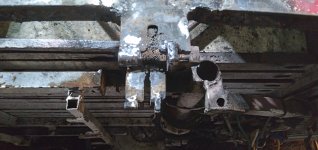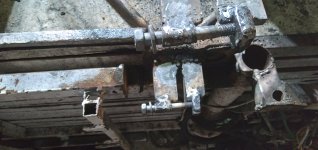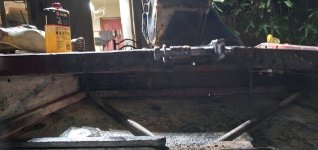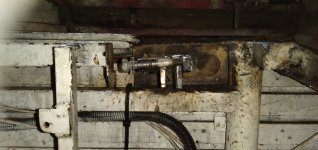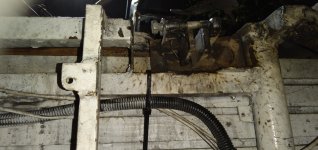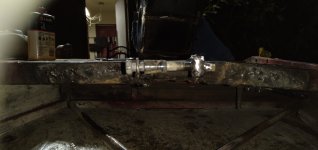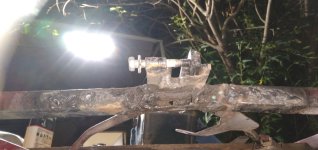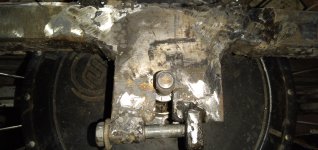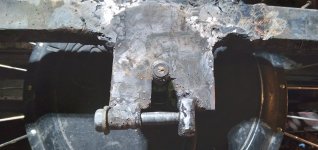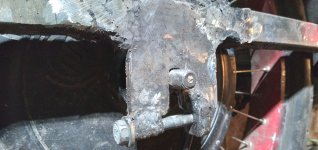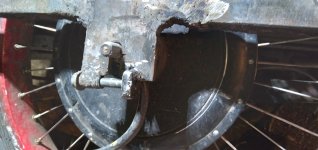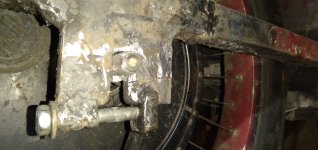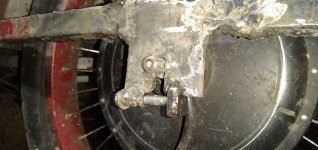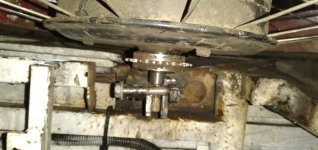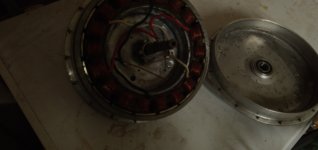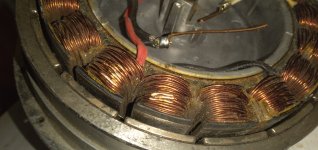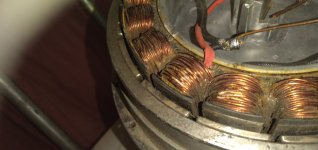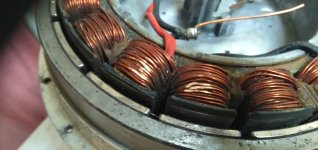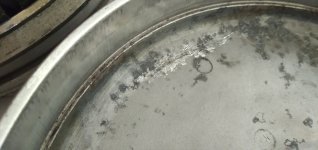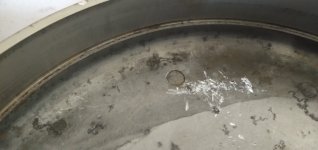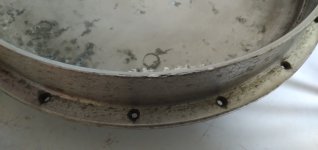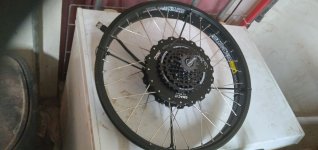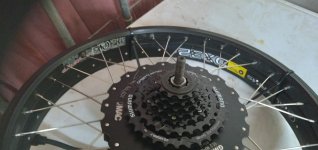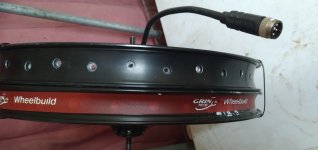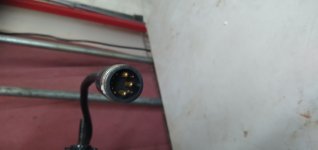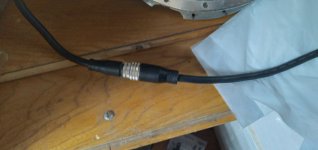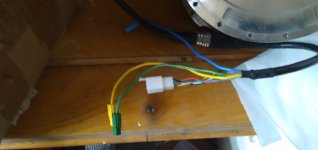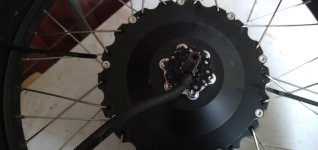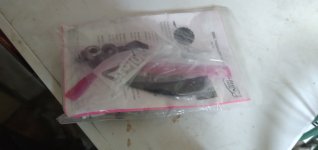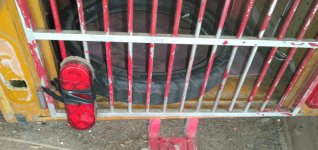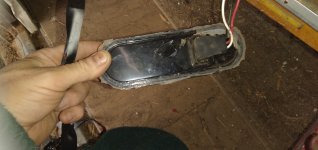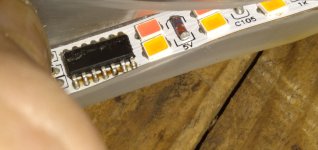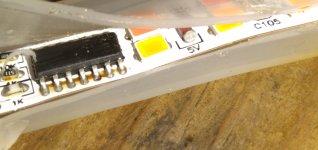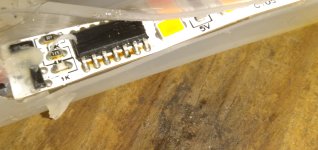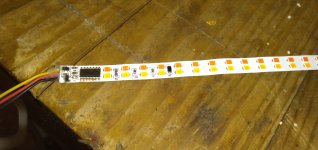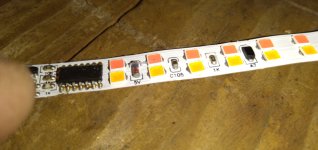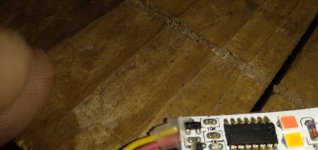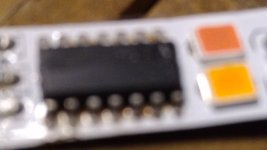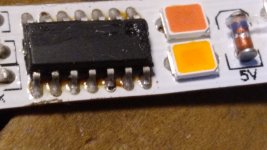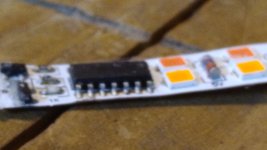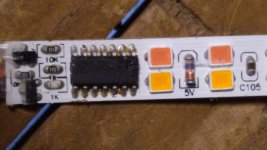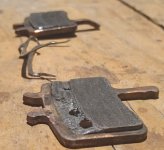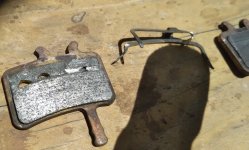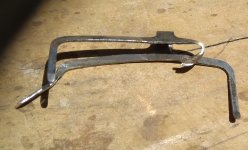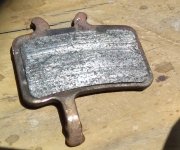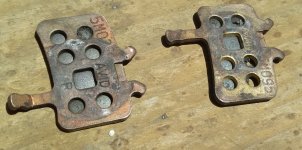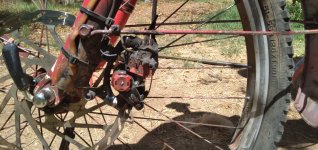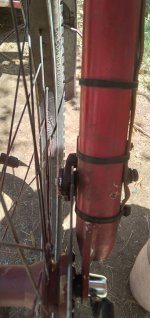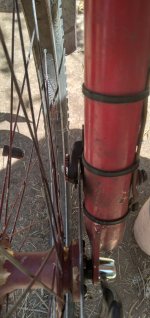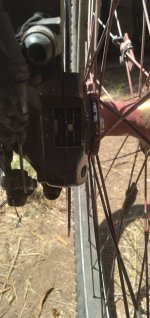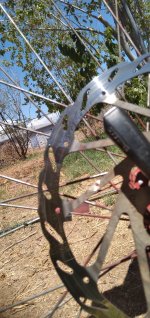So....this week has been no fun.
On the way to work one rainy day, my lights just went out...except the headlight, powered by the same battery and wiring as the rest of it, though not controlled by the little handlebar light switch (it has a separate one that switches it's own relay). The overhead cab/deck lights also have their own switch, and they still worked. That made it seem like a problem with the other switch.
But, also working were the front turn signals and the front handlebar white LED strips, but not any of the rear stuff, or any of the downlighting front or rear, including tail and brake and turn, and they don't go thru any main power switch at all, but are provided power anytime the trike is on (and just grounded by the appropriate switch in the case of brake/turn).
During the ride I didn't have time to really analyze any of the above, just noted the stuff that worked and didn't; the analysis came later.
By the time I reached work, I thought there was steam coming off the headlight but it was actually wisps of smoke from wiring inside the "triangle" where all the interconnections, relays, etc are at. I yanked the battery disconnects (main and lighting), and opened the side panel of the triangle, and found no smoke or obvious wire damage. Then I had to work my shift, and try to do some troubleshooting in the breakroom; spent about an hour but it's too dark in there and I had no multimeter with me, and I was completely exhausted, so I couldn't do much and couldn't locate the problem, so I rode home without lighting battery connected while it was still light enough outside to not need them as much.
Once home, after satisfying Jelly's need for play and greetings (after which she always just goes to schmoo somewhere), and sitting to eat something and rest for an hour, I went out to troubleshoot the problem. First I found that the wires to the little switch on the bars had heated enough to somewhat melt the insulation on them together (there are three paralleled tiny wires to provide 12v up to the switch, they were all stuck together along their length). They had not damaged any other wires in the big cable they're in, but I decided to do what I should've done before which is to run a separate power wire from there to the switch...though I haven't actually done that yet (for now it is just using a spare set of wires in that cable). There just wasn't time to do more than getting the basics working before I had to try sleeping (very poorly) to be able to work the next day.
Anyway, after going thru all the wiring, I eventually found the source of the whole problem--one of the side marker light strips, on the left side of the edge of the cargo seatbox, lost it's wiring and that wiring shorted lighting positive to lighting ground.
"lost it's wiring" means that something caught the wire and ripped it off the light strip, and out of the hole in the wood next to it that the wire comes out of. The wire was ziptied along the bottom of the trike frame pretty closely, so whatever it was would've had to be large or curved, or a branch...and since I didn't see (or feel) anything like that, it must've been in one of the numerous stretches of inches-deep water in the roads on my commute path. None of them came all the way up to the trike bottom, which is something like 10" off the ground, but some were pretty close.
I ended up just tying that off and taping off the ends, until I have time to reconnect it to the light strip. Just for safety of the signal wires to the rear, I disconnected the power and ground for the lighting from the multiwire cabling going back there, and ran separate new thicker-gauge wires to power the rear tail, down, brake, signals. The actual turn and brake signal wires are still in the multiwire cable; that's too complex to change out in the three hours or so I had to work on it, since it goes up thru all the handlebar wiring and stuff--the power/ground only go to the distribution bus inside the "triangle", so much easier and quicker, and something I could still (barely) do in my exhaustion.
Once it was all working, I ziptied it all down while it was running, so I could see if I messed anything up right away, then shut it off and went inside to collapse for the night.
Now, I didn't touch any of the wiring for anything other than the lighting...but there is now a change in behavior for the PAS (cadence sensor only) at speeds below around 11-12MPH during acceleration (but not during deceleration, only while the system is under load)...it surges repeatedly, at about 1/2 second-ish intervals, with what feels like complete loss of power between the surges. Throttle under the same circumstances works perfectly. Above that speed, PAS works just fine.
The problem does not track the speed of my pedalling--I can be in a gear that virtually freewheels the cranks and spin as fast as I can physically do so, and the surging happens exactly the same, and does not follow the crank RPM, it appears to be only at that fixed rate.
So it can't be a problem with the sensor itself (which is the cadence part of a TDCM BB torque sensor; I'm not using the torque part ATM).
I haven't changed any CA settings, or even accessed the setup, in quite a long time, so unless moisture from the rain got into the CA and caused it to corrupt a setting, there shouldn't be anything there to cause this. I can't see anything unusual about the throttle output voltage reading on the CA diag screen, in either PAS or throttle control.
It can't be a controller problem, since the throttle signal fed to each of them comes from the CA output, and that obviously works perfectly fine using the throttle input to the CA.
After I do some other critical housework (fence repairs primarily) this "weekend" (sun/mon) I will use my analog multimeter to watch the throttle output from the CA to see how it is changing during PAS use. (vs throttle)
Then if it verifies that the CA is sending a different throttle signal under PAS than throttle (even though they look the same on the CA diag screen), I will go thru the CA settings to see if something changed there, somehow.
If nothing changed, I'll have to check out the PAS sensor / wiring, which do go thru the triangle box with the lighting wiring (but are tied down separately and weren't handled during the repairs), in case something was somehow damaged.
If I don't get to do it this weekend, I will be off work for the week after next, and will do it then (if nothing else comes up that's higher priority, which has happened frequently of late, and taken up all the time/energy I have.
Hopefully I'll also have time that week to do the stuff previously posted, to get the GMAC on the left side...but at this point I am not expecting to accomplish much, given the way things have been happening lately.
For instance, last week (saturday?) on the way home from work I had a flat, virtually as I reached my driveway. The hole turned ot to be on the sidewall of the tube, but there is no corresponding hole in the tire sidewall. The tire did have bits of thorn embedded in it here and there, only in the tread area, but none of them went thru the whole tire thickness, much less thru the double-cut-up-innertubes used as tire liners (which also don't have any part of them corresponding to the hole in the tube). The hole is more like a tiny slice in shape, but there's no marks around it, and you can only even see it when it's inflated and leaking (rapidly).
I just marked the spot and replaced the tube with a new one, so I can patch the damaged tube to keep as a spare.
While I was working on it, I also took some pics of the axle and dropouts (will post them later); there's zero twisting of the axle in the dropout, it still fits so tightly I have to use the rim/tire to lever the wheel out of them, and have to use a prybar to lightly spread the inboard dropout enough to get the axle back in that one. So the dropout clamps are working.

Other stuff to fix around the house also keeps accumulating, too. :/




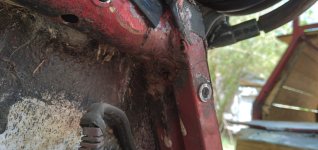
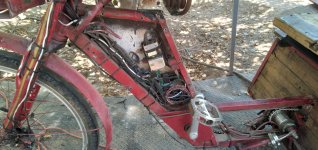
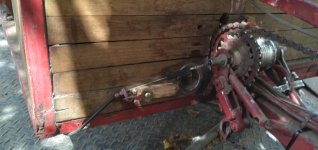
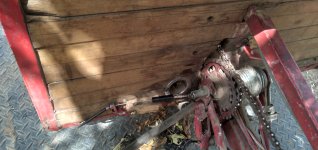
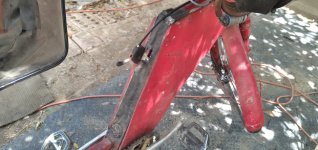
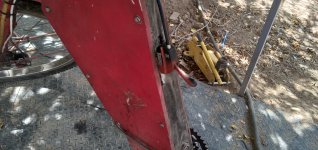

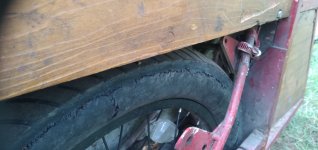
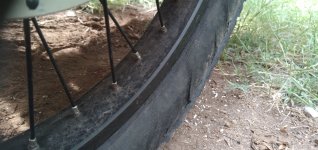


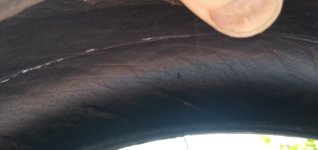
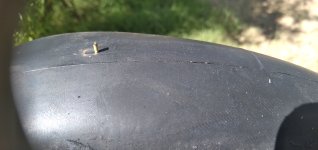
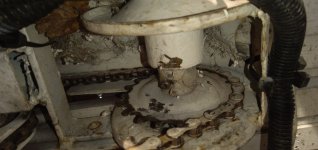
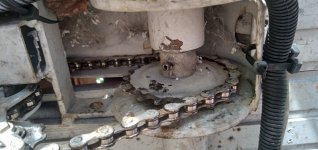
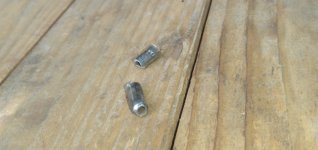


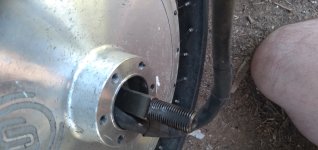


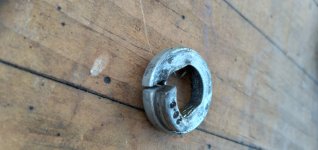
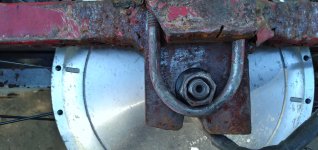


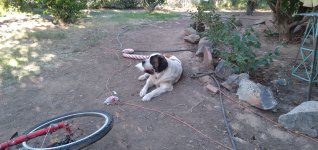
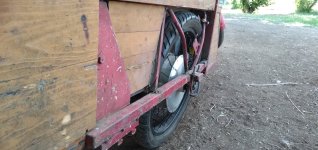
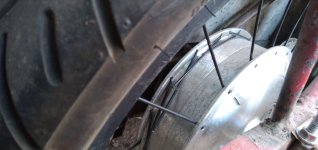
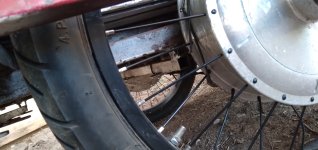
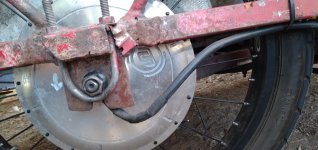
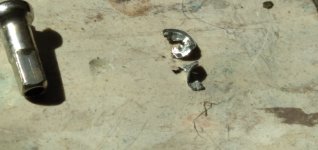
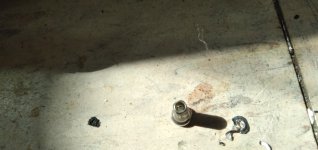
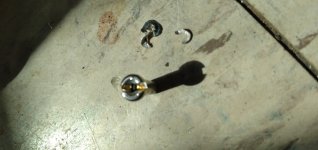
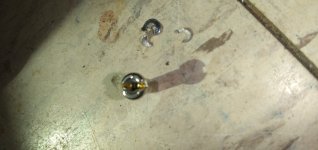
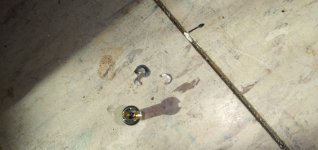
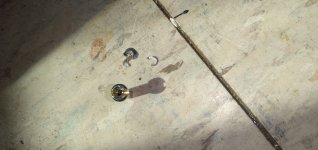
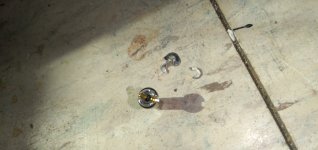
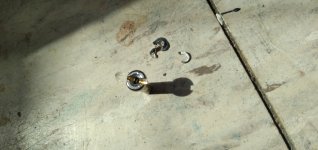
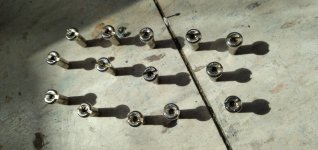
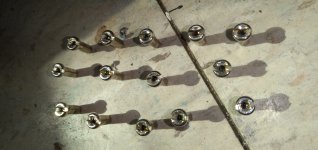
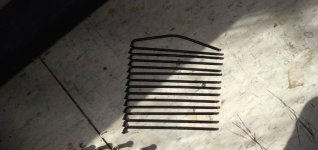
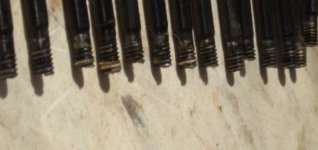
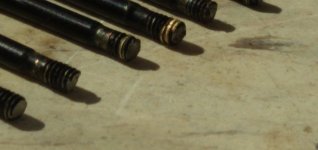
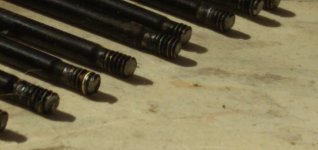
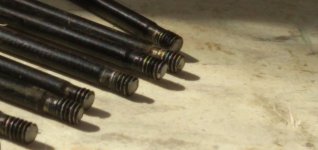
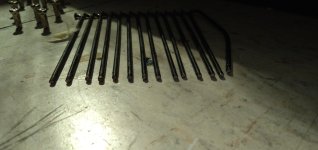
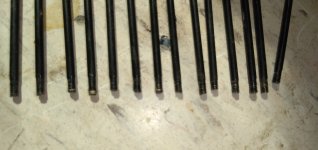
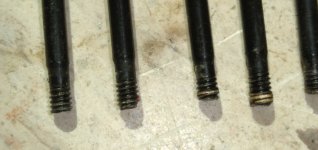
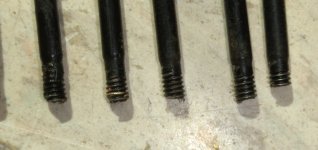
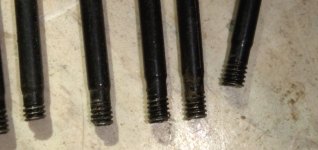
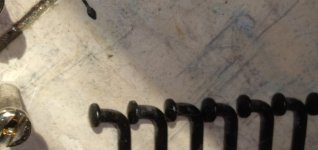
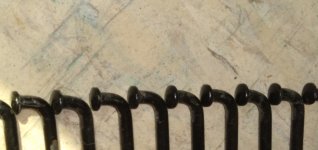
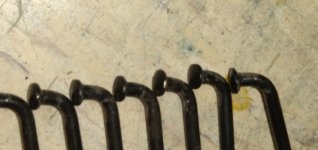
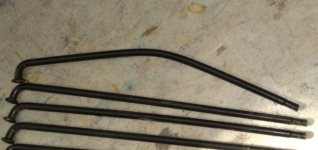
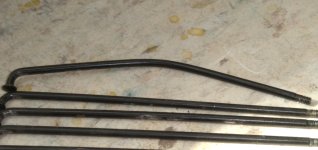
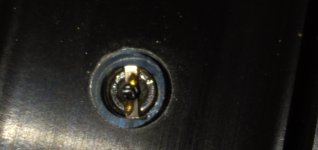
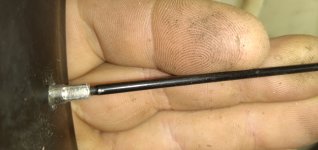
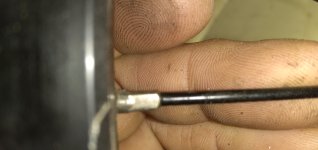
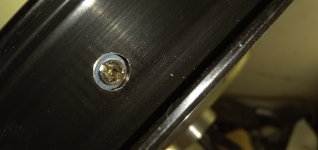
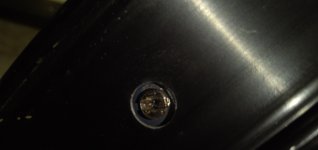
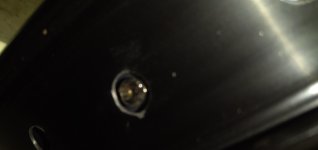
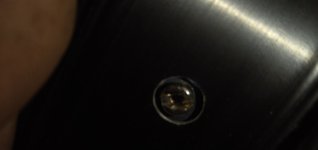
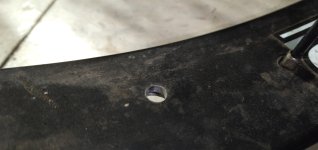
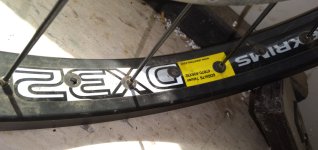
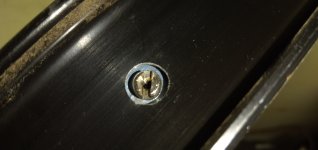
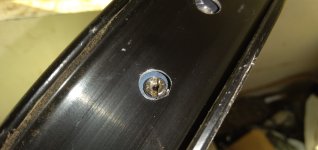
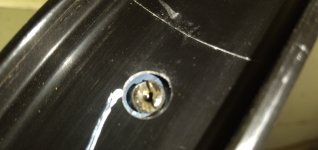
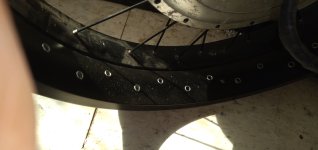
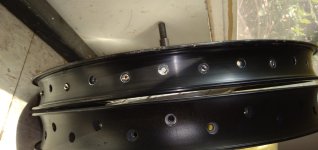
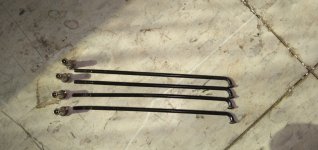
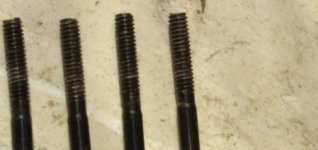
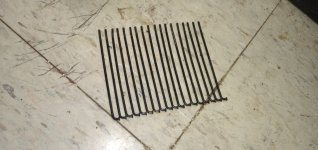
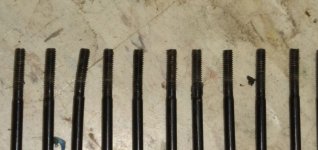
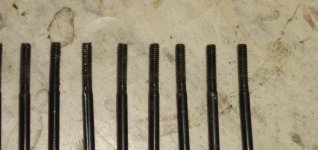
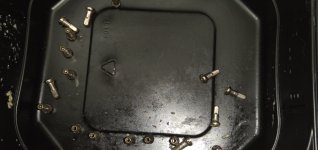
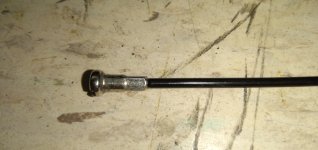
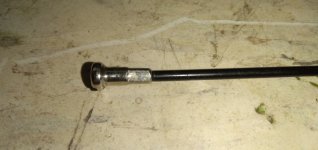

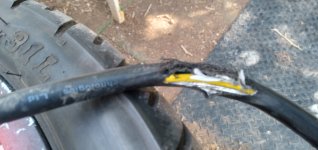
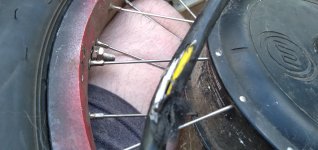




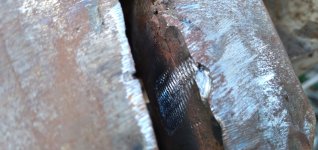
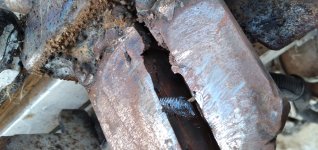
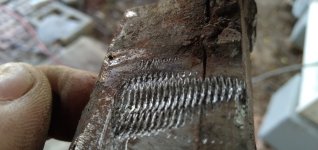
![PB38-Q34-2[1].jpg PB38-Q34-2[1].jpg](https://endless-sphere.com/sphere/data/attachments/187/187380-e1e6118cb023adb83263d38c6875fd58.jpg)
